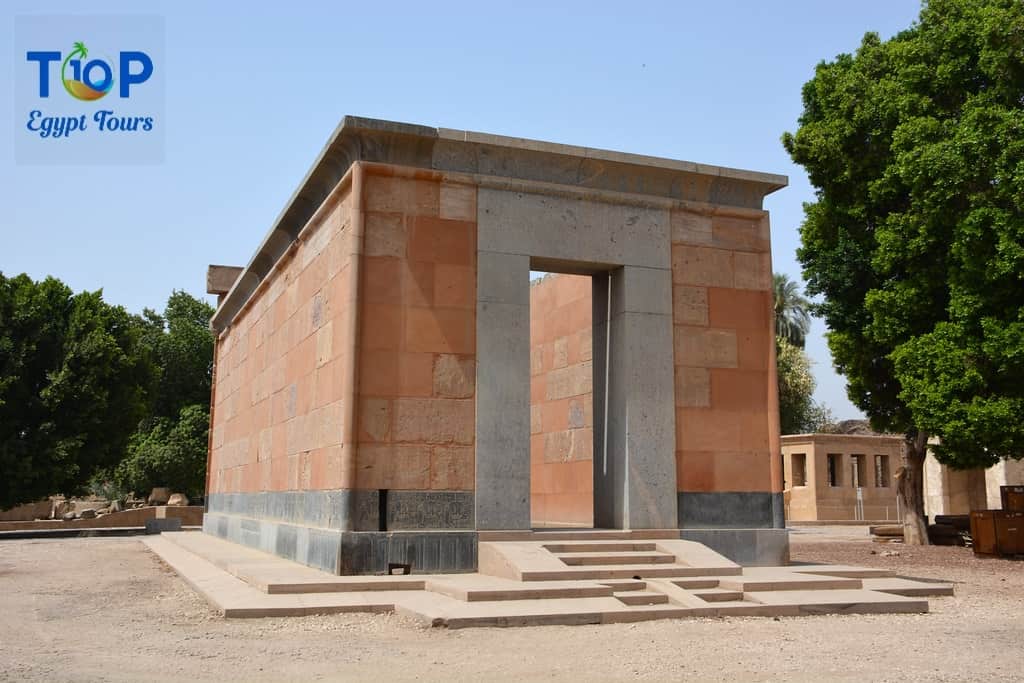The Red Chapel of Hatshepsut is a testament to the reign of one of Egypt’s most powerful female pharaohs. Hatshepsut’s legacy is evident in the intricate design and symbolism of the chapel, which was built during her reign in the new kingdom. The chapel was dedicated to the god Amun and was used for religious ceremonies and offerings.
In this article, we will uncover for you the Red Chapel of Hatshepsut with Top Ten Egypt.
Journey through History: Unveiling the Secrets of the Red Chapel in Luxor
As you step into the Red Chapel, you are transported back in time to ancient Egypt. The walls are adorned with intricate carvings and hieroglyphics that tell the story of Hatshepsut’s reign and her devotion to the god Amun. The chapel was originally located in Karnak but was moved to Luxor in the 20th century for preservation.
Rediscovering Hatshepsut: Exploring the Iconic Red Chapel in Luxor
Hatshepsut’s reign was marked by her ambitious building projects, including the Red Chapel. The chapel was designed to be a miniature version of the larger Amun temple in Karnak and was built using red quartzite and sandstone. The chapel’s intricate design and attention to detail make it a must-see attraction for anyone visiting Luxor.
Beyond the Temples: The Intricate Beauty of the Red Chapel of Hatshepsut
The Red Chapel is not just a temple, it is a work of art. The intricate carvings and hieroglyphics that adorn the walls are a testament to the skill and craftsmanship of ancient Egyptian artisans. The chapel’s design also incorporates astronomical alignments, reflecting the ancient Egyptians’ fascination with the stars and the cosmos.
The Sacred Sanctuary: Immersing in the Spiritual Aura of the Red Chapel in Luxor
The Red Chapel was a sacred space dedicated to the god Amun, and visitors can still feel the spiritual aura that permeates the chapel today. The chapel’s design incorporates elements of sacred geometry, creating a harmonious and peaceful atmosphere that is perfect for meditation and reflection.
Where Art and Architecture Converge in Luxor
The Red Chapel is a masterpiece of ancient Egyptian art and architecture. The chapel’s design incorporates elements of both the Old and New Kingdoms, reflecting the continuity and evolution of Egyptian culture over time. The chapel’s intricate carvings and hieroglyphics also showcase the ancient Egyptians’ mastery of art and storytelling.
Luxor’s Hidden Gem: Unraveling the Mysteries of the Red Chapel of Hatshepsut
The Red Chapel is often overlooked by visitors to Luxor, but it is a hidden gem that is well worth exploring. The chapel’s design and symbolism offer a glimpse into the religious and political beliefs of ancient Egypt, and its preservation and restoration efforts have ensured that it will continue to inspire and awe visitors for generations to come.
Conclusion: The Majestic Legacy of the Red Chapel of Hatshepsut
The Red Chapel of Hatshepsut is a testament to the majesty and power of ancient Egypt. Its intricate design and symbolism offer a glimpse into the religious and political beliefs of one of Egypt’s most powerful pharaohs, and its preservation and restoration efforts have ensured that it will continue to inspire and awe visitors for generations to come. A visit to the Red Chapel is a journey through history, art, and spirituality that should not be missed.
Browse our complete list of Egypt tours Click Here



Comment (0)